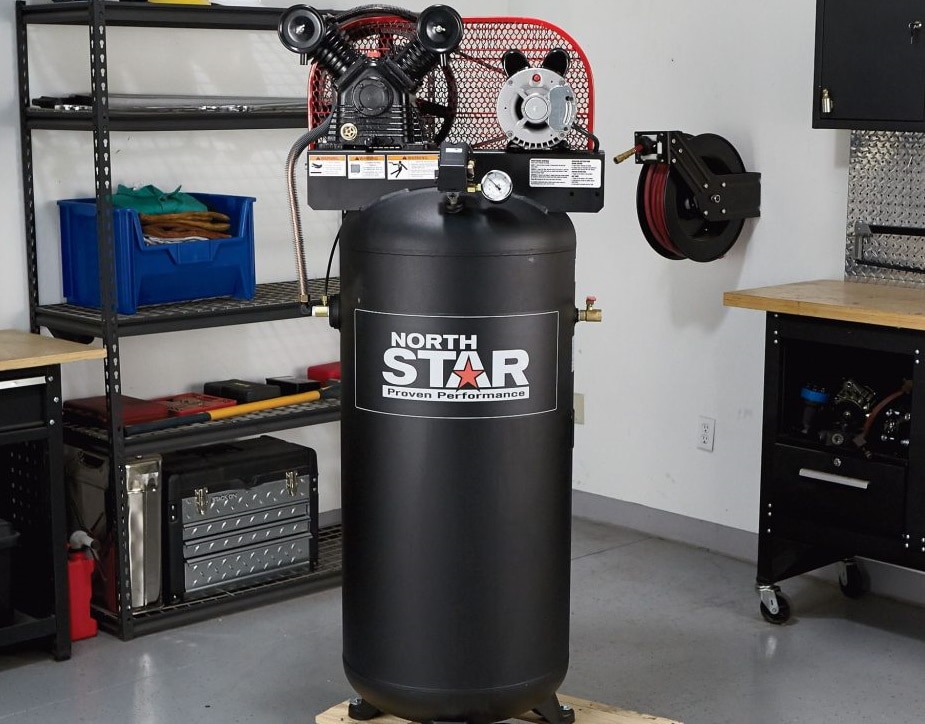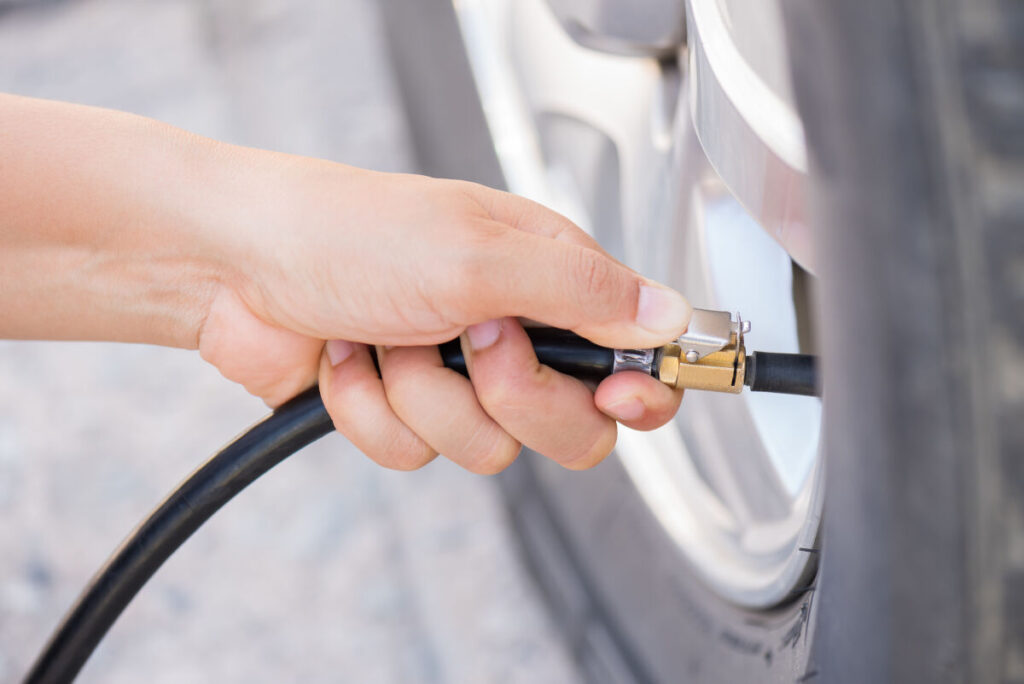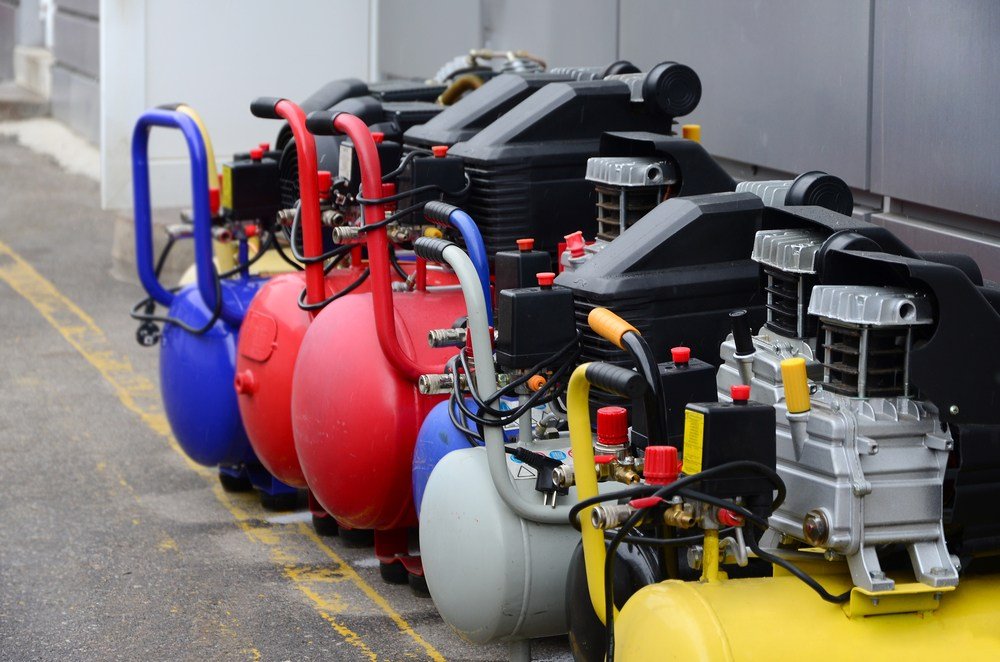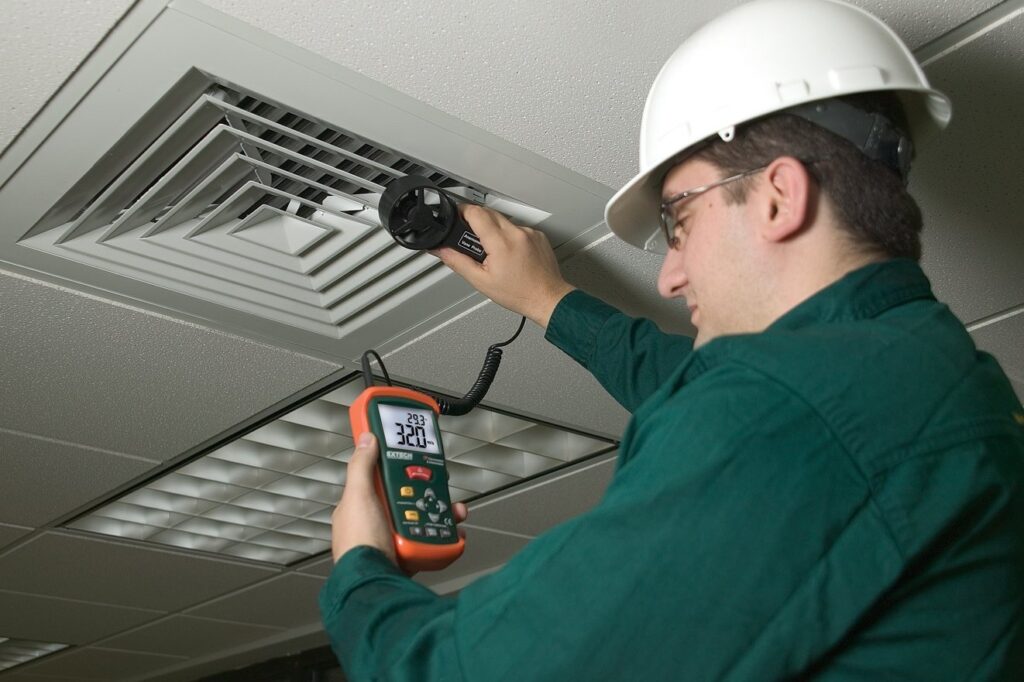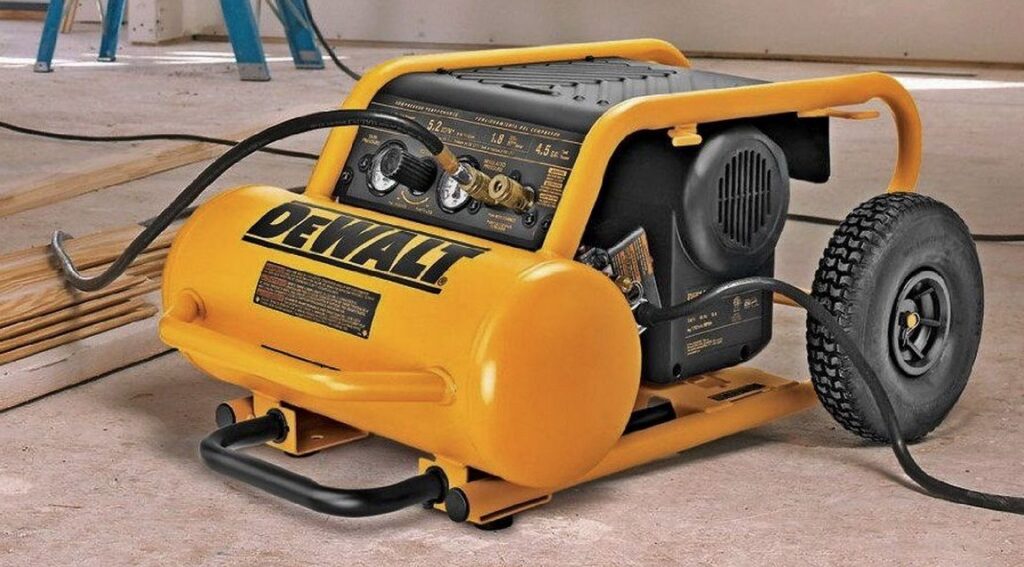A good air compressor is like a wife – you don’t realize how much you need one until you get one. An air compressor is a tool that works by using an electric motor or a gas engine to compress air and store it in a tank. This tool is a must-have for any household as it can be used for inflating tires, cleaning the house, or even power tools.
We’ve reviewed 30 models to find 8 best garage air compressors and our top pick is the PORTER-CABLE C2002-WK. In our review, we focused on important features a good air compressor for a garage should have such as whether the compressor runs with or without oil, which drastically affects the ease of use, maintenance requirements, and durability of your compressor. We also considered the volume of the pump which should be high enough – we only included models with at least 2 CFM that will allow you to use your compressor for various purposes. Another crucial feature is the PSI rating as it tells you how much air pressure an air compressor can generate. The higher the PSI, the better, this is why we only included models with a PSI of at least 125. Tank size is also important as you want a model with a big tank that can store more compressed air and doesn’t need to be refilled too often.
Users love this small yet powerful air compressor from Porter-Cable. The pancake air compressor only has a small six-gallon tank, but with a maximum pressure output of 150 psi it is among the most powerful one-tank air compressors on the market. In addition, the 3.7 cfm flow rate at 40 psi means that this air compressor is able to turn over relatively quickly so that you can keep working. However, note that it is still designed for small air tools rather than industrial work where continuous air is needed – for this purpose, you’d be better off choosing a powerful industrial air compressor.
Users appreciated that this compressor is able to start in cold temperatures thanks to the powerful two horsepower motor and can be operated with an extension cord without issues. However, they noted that although the compressor is not impossible to move around, without wheels and weighing in at 30 pounds it is significantly more stationary than similar air compressors. Users also found that the compressor is noisy – certainly requiring ear protection for any amount of use – and vibrates enough to shake non-concrete floors.
One of the best things about this garage air compressor compared to others in our review is that Porter-Cable offers a long three-year warranty, which adds peace of mind to your investment.
This garage air compressor from Dewalt is more expensive than other pancake-style air compressors in our review, but brings the technical specification and customer feedback to justify the added cost. First, the compressor has a powerful two horsepower motor that is able to start up in extremely cold temperatures or on a 50-foot extension cord without issues. Second, the compressor has a maximum pressurization of 165 psi – significantly more than most other one-tank air compressors on the market today. The air deliver rate, 2.6 cfm at 90 psi, is on par with other pancake-style air compressors and provides fast enough turnover for uninterrupted use of smaller tools like nail guns. The main limitation on this air compressor is the six-gallon tank, although this is not an issue for most at-home mechanics looking to power small tools for the occasional job.
Users appreciated how well-constructed this air compressor is and the attention paid to small details. Dewalt equipped the feet with heavy rubber fittings to prevent scratching or bending the legs from repeatedly moving the compressor around. The handle is easier to grab and carry than on other pancake air compressors, and the unit is significantly quieter than competing compressors like the one from Porter-Cable.
This two-tank air compressor from California Air Tools is ideal for the professional mechanic or contractor who needs extraordinarily fast turnover to power continuous-use tools like air ratchets and air drills. The unit is rated for 6.4 cfm at 40 psi, which with tanks that are only 4.6 gallons each means that the compressor is constantly working. However, the two horsepower motor has no issue handling this workload and users appreciated that it was powerful enough to run in cold conditions while still drawing a relatively low current from a generator.
Like other offerings from California Air Tools, this compressor is among the quietest in its class and left users impressed. Note that although the air compressor uses a two-tank design, it is not intended for extremely high pressure applications – the unit is rated only to a maximum pressurization of 125 psi. In addition, although the generator is advertised for use in the field, it weighs in at nearly 70 pounds and does not come with wheels – making it extremely difficult to move around.
While the air compressor comes with a one-year warranty, users found the same poor manufacturing quality and customer service issues as are present on some of the other air compressors from California Air Tools.
This oil-lubricated air compressor from Wen is much bulkier and requires more maintenance than the oil-free compressors in our review, but it will last you a lifetime if taken care of properly. In addition, Wen offers a two-year warranty to back the performance of their air compressor.
The compressor is not extraordinarily powerful – the tank is only six gallons and it has a maximum air pressure of 125 psi. The unit also comes with an adjustable regulator that allows you to precisely control the output pressure all the way down to just a few psi. In addition, although it is not the highest output rate among compressors we reviewed, the 4.2 cfm flow rate at 40 psi is better than the flow rate found on most comparable garage air compressors – especially at this moderate price point.
Users noted that this garage air compressor is significantly noisier than other air compressors of the same size class and requires ear protection if you are using it for more than a few minutes. Another issue that users identified is that due to the small tank volume, the compressor begins recovering after only a very short burst of use and takes surprisingly long to recover. As a result, this compressor is much better for small projects and is not suitable for continuous use.
Users loved this inexpensive air compressor from Bostitch. Although the small 10.5-amp motor might leave you skeptical about its ability to handle serious projects, don’t underestimate the power that this garage air compressor packs. It is able to deliver up to 150 psi maximum air pressure and has a flow rate of 2.6 cfm at 90 psi for fast turnover. In addition, the compressor has two output ports so that it is possible to use two air tools simultaneously without disconnecting and reconnecting them constantly. Users found that it could easily handle most garage air tools, although of course the six-gallon tank remains a limiting factor for use by contractors and other industrial workers.
Like the compressor from Porter-Cable, this air compressor uses a pancake design that is somewhat more difficult to move around than comparable wheeled compressors. However, unlike that unit, this air compressor is not excessively noisy and does not suffer from extreme vibrations.
Although the unit comes with a relatively short one-year warranty, users report few problems with the air compressor even when using it frequently. Users also liked that the compressor arrives ready to use, unlike some other models.
This twin-tank garage air compressor from Makita is a smaller, less professional-minded version of the twin-tank unit from California Air Tools. First, the compressor requires oil for lubrication, meaning that it requires much more frequent maintenance than an oil-free compressor. However, this comes with the added benefit that users report the compressor will last for years to come, far beyond Makita’s one-year warranty period. Although the compressor is louder than the offering from California Air Tools, it is only slightly so – users remained impressed with how quiet this air compressor is.
The performance of this air compressor is solid, but not outstanding for the cost. The compressor outputs a maximum pressure of 130 psi and turns over significantly more slowly than the California Air Tools two-tank model – 4.8 cfm at 40 psi. What does distinguish this compressor is the 2.5-horsepower motor, which is the most powerful motor among air compressors in our roundup.
The additional downside that users found with this unit is that it is very heavy and not designed with wheels – if you’re looking for a more portable option, take a look at our article on some of the best portable air compressors. Some users report mounting it on a dolly to be able to push it around rather than carry it by the built-in handle.
This 10-gallon tank air compressor from California Air Tools is designed with the semi-professional mechanic in mind, offering a larger air volume to power tools like air ratchets and air drills without frequent interruption. The tank is arranged vertically, rather than in a horizontal orientation as is common for six-gallon air compressors, and is on wheels for easy transport. The powerful two horsepower motor provides plenty of kick for starting the unit in any temperature conditions and only draws 2,000 W of surge power if you are planning to run this unit off of a generator in the field. Although the maximum pressure is somewhat low at 125 psi, the unit turns over extremely quickly with a flow rate of 6.4 cfm at 40 psi and 5.3 cfm at 90 psi.
Many users turned to this air compressor because it is rated as the quietest 10-gallon air compressor on the market today, which can make a big difference if you are planning to use it frequently.
However, for many users, the advantage of the noise reduction was outweighed by poor manufacturing quality. Many users report that the unit stops working within the first year of use and that California Air Tools frequently declines to honor their already short one-year warranty.
There are several manufacturers of air compressors on the market today, and the California Air Tools is the biggest one in the country. The brand is known for its ultra-quiet and oil-free air compressors. It has spent more than 10 years in the industry and has built a reputation as one of the most reliable brands. It is therefore, no surprise that the California Air Tools 6010LFC is simply one of the best options on the market.
If you want something that is portable and quiet, then this is a clear winner. It offers plenty of versatility, helping you to do different stuff like inflating times, powering nailers and airbrushes, among other uses.
With CFM of 4, this is one of the more powerful options in the mid-range category.
Part of the appeal of this product is that the motor offers some of the best thermal overload protection, hence reducing the chances of damage because of overheating.
It also has other good features like the lightweight design and portability. Also, you can plug this machine almost anywhere around your workshop and even in the home garage.
This air compressor, with its power, is one of the best for applications such as auto spray painting and air grinding. It will also power all of your small air tools. And with a low noise generation, it is a good option for indoor applications as well.
Since garage air compressors are so versatile and so many disparate tools depend on them, there is a wide variety of garage air compressors on the market and many compressors are designed with different purposes in mind. Our eight picks above cover a range of types and budgets of garage air compressors, but how do you know which one you need given the tools you want to power and the jobs you plan to work on? Our buying guide will cover the basics of how garage air compressors are differentiated so that you can identify the type of compressor you need and the performance factors that are right for you.
The generator is the heart of any garage air compressor, but it’s also where air compressors are most different from one another. The first thing to consider when looking at garage air compressors is whether the compressor uses a one-tank or a two-tank design. In a one-tank, or one-stage, air compressor, air is taken into the tank one time only and compressed to its final pressure in a single stroke of the piston. This is in contrast to a two-tank, or two-stage, air compressor, in which air is compressed by one piston stroke, then pumped at pressure while being cooled to a second tank and compressed to an even higher pressure by a second piston stroke.
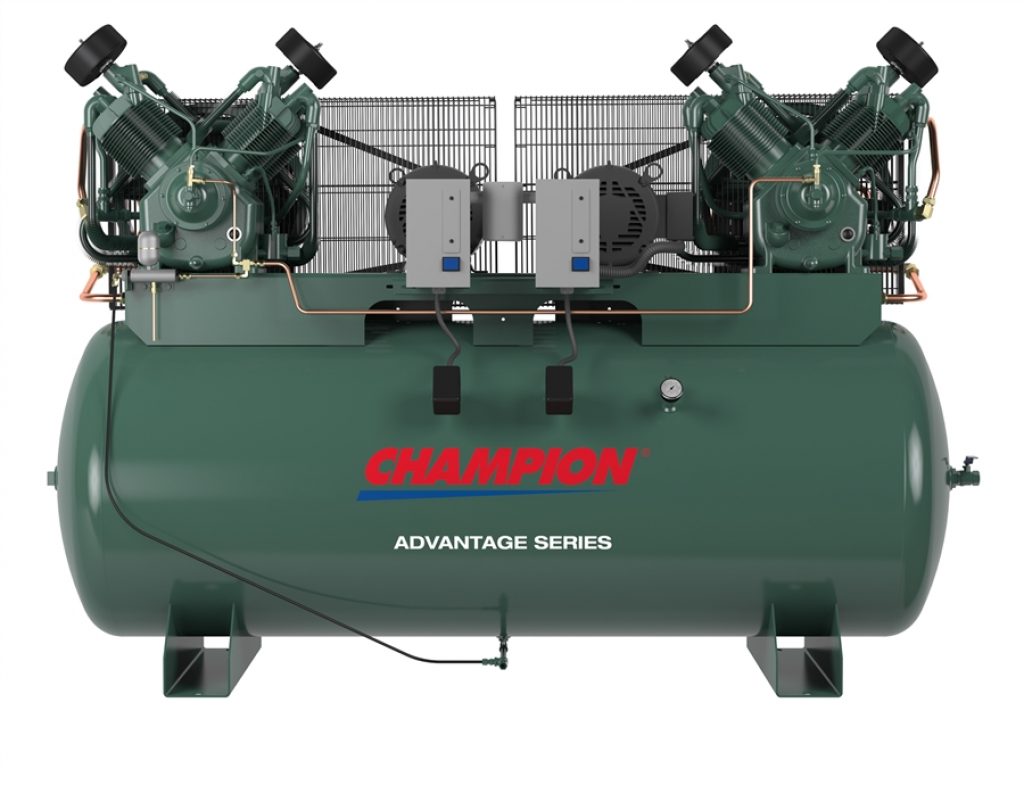
The piston that actually compresses air and pressurizes it requires lubrication to function properly. This lubrication can either come in the form of oil – which needs to be added to the air compressor regularly – or in the form of a Teflon coating around the piston that provides permanent lubrication.
In addition to requiring more frequent maintenance than their oil-free counterparts, oil-based garage air compressors tend to cost more and be bulkier since the internal design is more complex. However, oil-based garage air compressors typically last much longer if they are maintained properly over their lifetime. Still, if you are using your garage air compressor infrequently at home rather than for industrial work, it may be a long time before you wear out a less expensive oil-free air compressor. However, one additional consideration is that oil-based air compressors are much quieter than oil-free compressors, which can make a big difference if you’re working in your garage or during quiet times like at night.
Air compressors can either run on electricity or on gasoline, and which a compressor requires typically depends on the size, volume, and pressurization of a particular air compressor. For garage use, the vast majority of air compressors are powered by electricity rather than gasoline since it is cheaper, requires less maintenance, and makes it easier to start using the compressor. All of the garage air compressors in our review are powered by electricity.
The tank volume essentially describes the capacity of pressurized air that your air compressor can hold in a single pressurization and release cycle. Whether this number is important depends largely on what you are using your air compressor for. For example, if you are powering a pneumatic nail gun, where firing each nail uses a small amount of compressed air and the compressor has time to compress more air between each nail, tank volume is relatively unimportant. However, if you are using your air compressor to power a sander or a saw, where the air supply to the tool is relatively constant and high flow, then you will need a large tank volume in order for the compressor to keep up with the demand from the tool without running out of compressed air – such as the one found in a 60 gallon air compressor.
The performance of garage air compressors is described primarily by the pressure of air it can deliver – measured in psi, or pounds per square inch – and by the rate at which it can deliver air – measured in cfm, or cubic feet per minute. The pressure and delivery rate that you need depend largely on the tools you plan to use with your garage air compressor. When in doubt, opt for a more powerful compressor than you think you need since that way you will be able to power a more pressure-hungry tool later if you purchase one, rather than having to purchase an additional air compressor to go with that tool later.
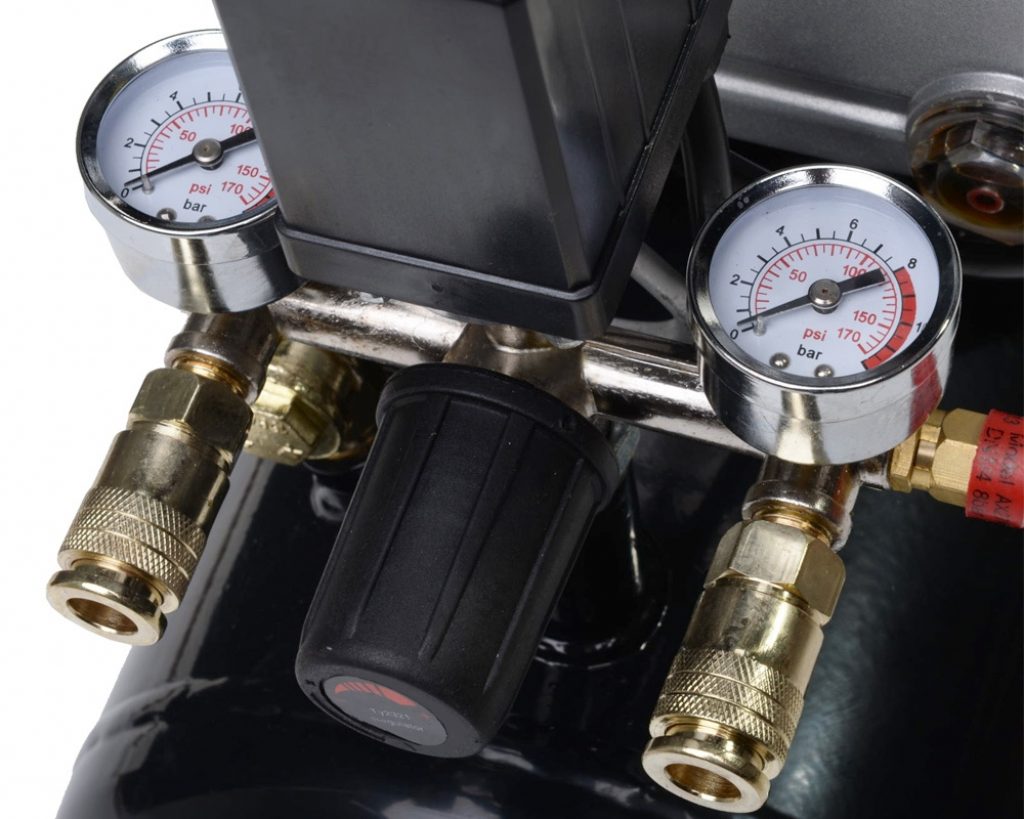
Like any other tool in your garage, you should expect your air compressor to offer a long lifespan before needing to replace it – so durability is an important consideration. As discussed above, oil-free air compressors do not last as long as oil-based air compressors since the Teflon coating around the piston will eventually dry out and crack. However, you should also consider whether the motor itself, the electrical wiring, and the air tubing is durable and able to handle frequent jobs near maximum output – user reviews are the best way to determine this since many people rigorously test their air compressors after purchasing a new unit.
Also be sure to check the warranty on any garage air compressor, since this is an important fail-safe for your purchase and something that can provide peace of mind that your investment is protected.
Our overall favorite garage air compressor was the C2002 pancake-style compressor from Porter-Cable. This unit combined excellent features and strong performance with a modest price. Although the six-gallon tank is relatively small for driving air ratchets and similar tools, the 150 psi maximum pressure offers plenty of power and the compressor has a fast turnover. Users also loved having a three-year warranty for peace of mind that the compressor will last for years to come. Our runner-up was the similar compressor from Dewalt, which was slightly more expensive but offered even more power with a 165 psi maximum pressure and attention to detail in the little points of the design like the carry handle. However, Dewalt couldn’t match the long warranty of the Porter-Cable unit. The two-tank, oil-free 4620AC from California Air Tools was also in the running for best garage air compressor since it offers an incredibly high turnover rate that allows uninterrupted use of tools like air ratchets and drills. Although California Air Tools suffers from manufacturing quality issues, users were also impressed by how quiet this powerful air compressor is.

